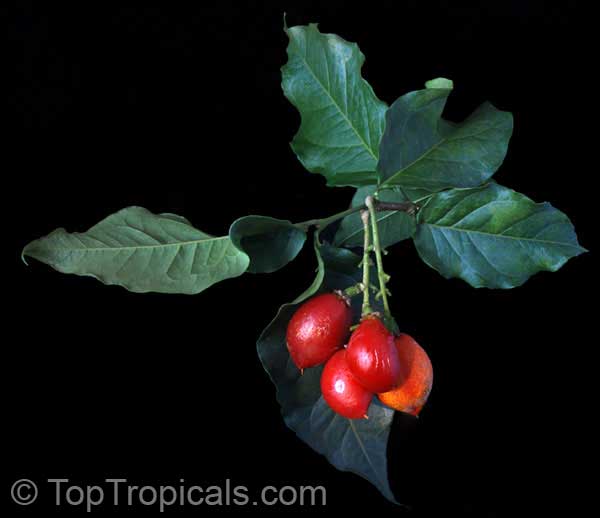Bunchosia - Peanut Butter Fruit Tree
by Alex Butova, the Witch of Herbs and Cats
Alexandra Butova is our columnist, journalist, and photographer, living in Riga, Latvia. She has has been with TopTropicals since Day One (2002), writing about magic plants, travel, and of course cats - from the CatNation she belongs to. Alex is in charge of TopTropicals.ru website.
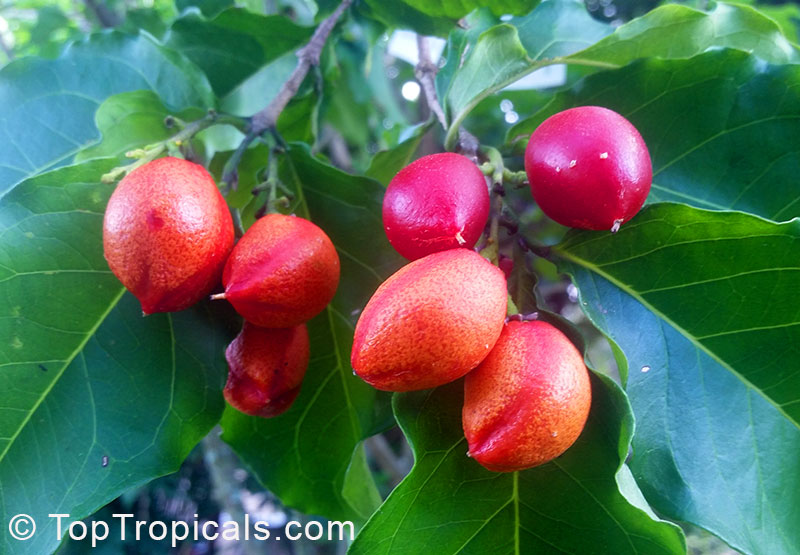
Bunchosia - Peanut Butter Fruit Tree
...One of the most fascinating exotic fruit, as amazing as Miracle fruit, Peanut Butter Fruit is loved by both kids and adults... and yes, it tastes exactly like peanut butter!..
Bunchosia argentea, known asPeanut Butter Fruit or Ciruela Del Monte, is a species offlowering plantin theacerolafamily,Malpighiaceae, that is native to Venezuela, Colombia, Peru, Brazil, GuyanaandSuriname.
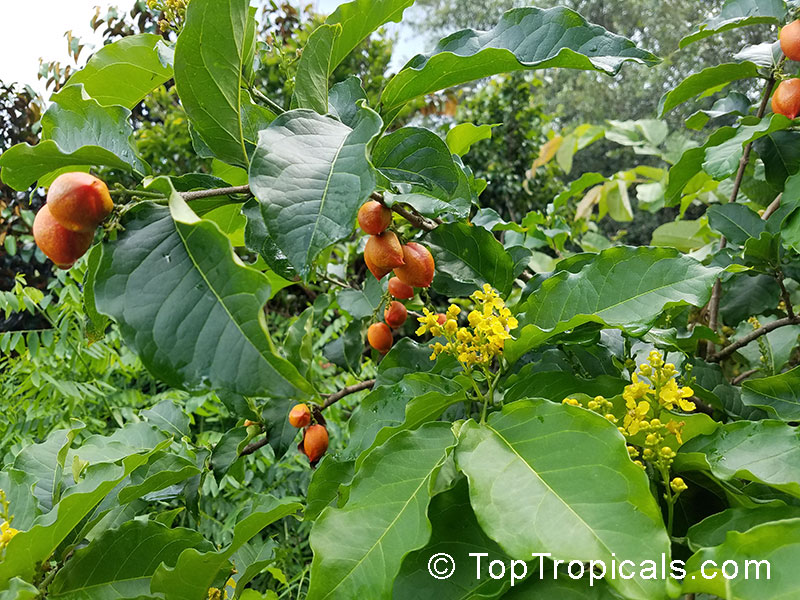
The generic nameBunchosiadates from 1822, when these plants were segregated from the 1753 genusMalpighia.The genusMalpighiaand family Malpighiaceae commemorate Marcello Malpighi (1628 - 1694), distinguished Italian doctor and naturalist, who wrote on the anatomy of plants. British botanist George Don in 1831 explained:"Bunchosia,fromBunchos,the Arabic name for coffee, in allusion to the similarity between the seeds of this genus and those of coffee."
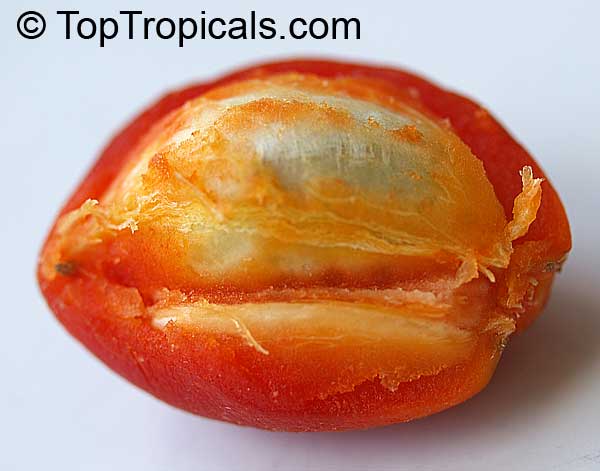
Peanut Butter Fruit is a very attractive, evergreen small tree – it grows max 10-15 ft.Leaves are simple, opposite, ovate, up to 7" long and 3" wide with a wavy margin, forming a very ornamental canopy.
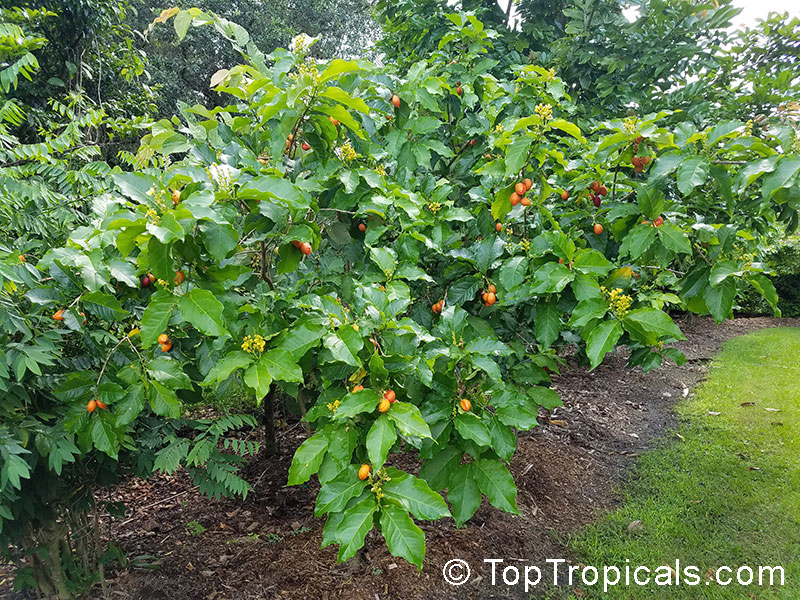
Small but attractive, yellow, lightly perfumed flowers start to show in March or early spring, and foliage is very attractive year round. The clusters of yellow flowers borne freely for most of the year, and are followed by an abundance of dark-red to dark-orangefruits to around 1 inch. The fruit flesh is soft, and in the middle you can find a large one or two seed. Bunchosia argentea is self-pollinating so you only need one plant for fruiting. Harvest between February-September.
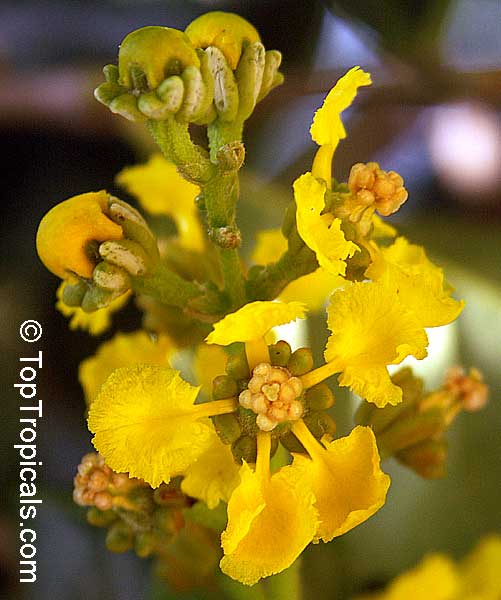
Peanut Butter Fruit tastes just like the name implies: like rich, creamy, delicious peanut butter but with the added bonus of a true tropical fruity flavor with a surprisingly light consistency! When ripe, the fruit transforms from a vibrant light color to a cool deep red, like your favorite shade of lipstick! The fruits are teardrop shaped and just a tad larger than a quarter or as really big grape.
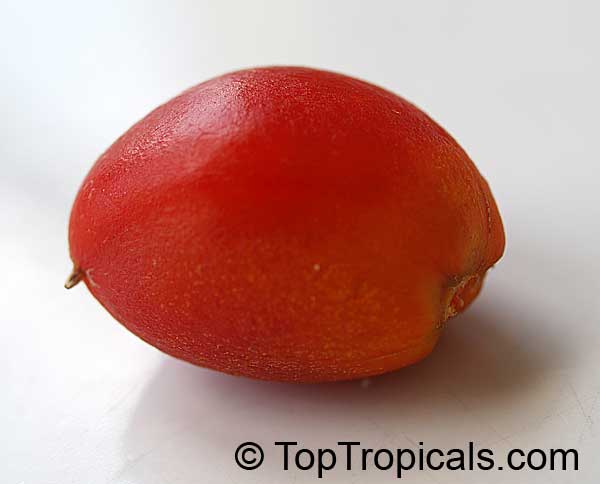
The fruit are sweet, delicate and best eaten straight off the tree as soon as it turns red. The yellow-orange fruit is not very juicy but has concentrated sugars like a dried fig or an American persimmon. The fruit can be eaten fresh or made into milkshakes.It has a sticky, dense, sweet, pleasant-tasting pulp - ideal for jam, jellies, preserves, muffins and the like. The flesh can also be dehydrated.
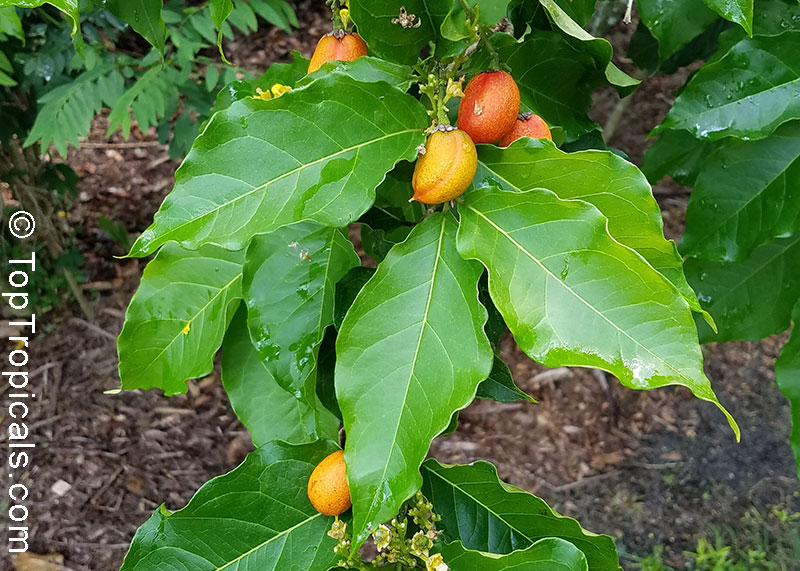
Once ripe, Peanut Butter Fruit will have a short shelf life and should be refrigerated and used within a few days or it can be separated from its seeds and frozen.
Peanut Butter Fruit has good nutritional value:rich with protein, low in calories and fat and are a source of simple sugars, fiber, and vitamins. Their richness in vitamins, minerals, micro-nutrients, anti-oxidants helps the body prevent or at least prolong the natural changes of aging by protecting and rejuvenating cells, tissues and organs.
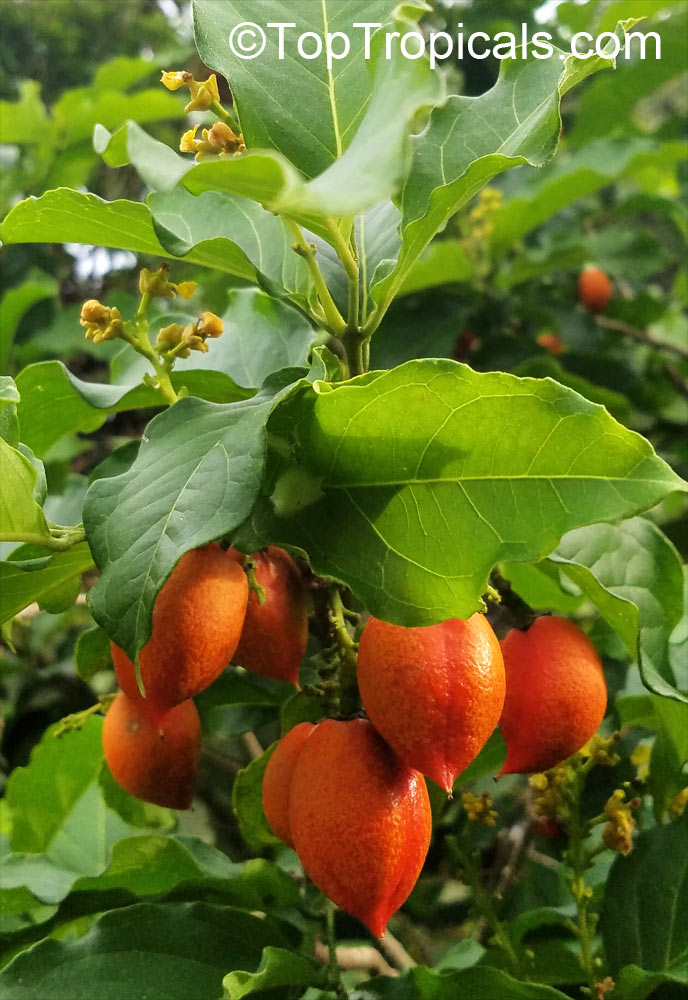
Dietary fiber from these fruits, as part of an overall healthy diet, helps reduce blood cholesterol levels and may lowerriskof heart disease. Fiber is important for proper bowel function. It helps to reduce constipation and diverticulosis. Folate (folic acid) helps the body form red blood cells.
It is most important for women of childbearing age who may become pregnant should consume adequate quantity of folic acid from foods. The fiber of Bunchosia argentea is one of the best way to get folate from the nature! This reduces the risk of neural tube defects, spina bifida, and anencephaly during foetal development.
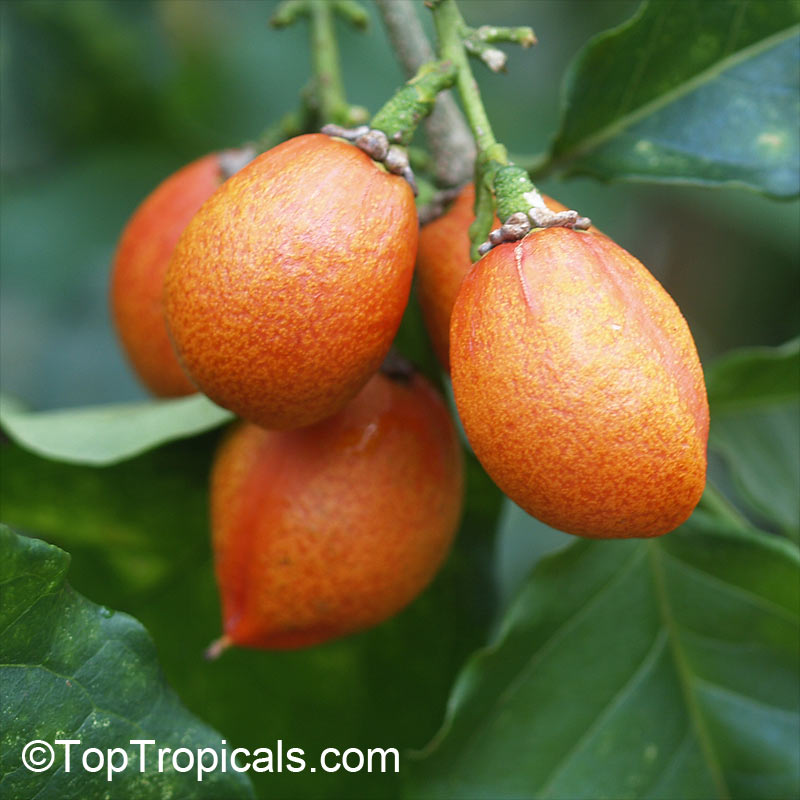
In 2013 Bunchosia argentea was the focus of a study in Brazil to determine the fruit’s antioxidant potential. Studies proved the fruit to be an excellent source of carotenoids, specifically lycopene offering nearly ten times that found in tomatoes! The lycopene has been shown to have high concentrations in prostate tissue. Considering prostate cancer is the second most common cancer among the men there is great hope in the medical community there that this unique fruit may be able to help reduce the risk of prostate cancer.
One of the most fascinating exotic fruit amazing Peanut Butter Fruit is loved by both kids and adults. And of course, this tree attracts wildlife - birds, bats, any small creatures who like to enjoy the sweet, tasty fruit!
The easy, low-maintenance Peanut Butter Fruit tree is essential for any edible landscape, rare fruit collector, or tropical/subtropical garden. It has a great ornamental or screening value. Alsocan be grown in container, will fruit indoors providing bright light and regular fertilizer program. Similar to fast-fruiting Annonas, and its close relatives Malpighia (Barbados Cherry) and Bursonima (Nancy Tree), Bunchosia tree starts fruiting in small size and at young age: 2-3 years from seed!
Start growing it now, have fun, and enjoy the benefits right away!
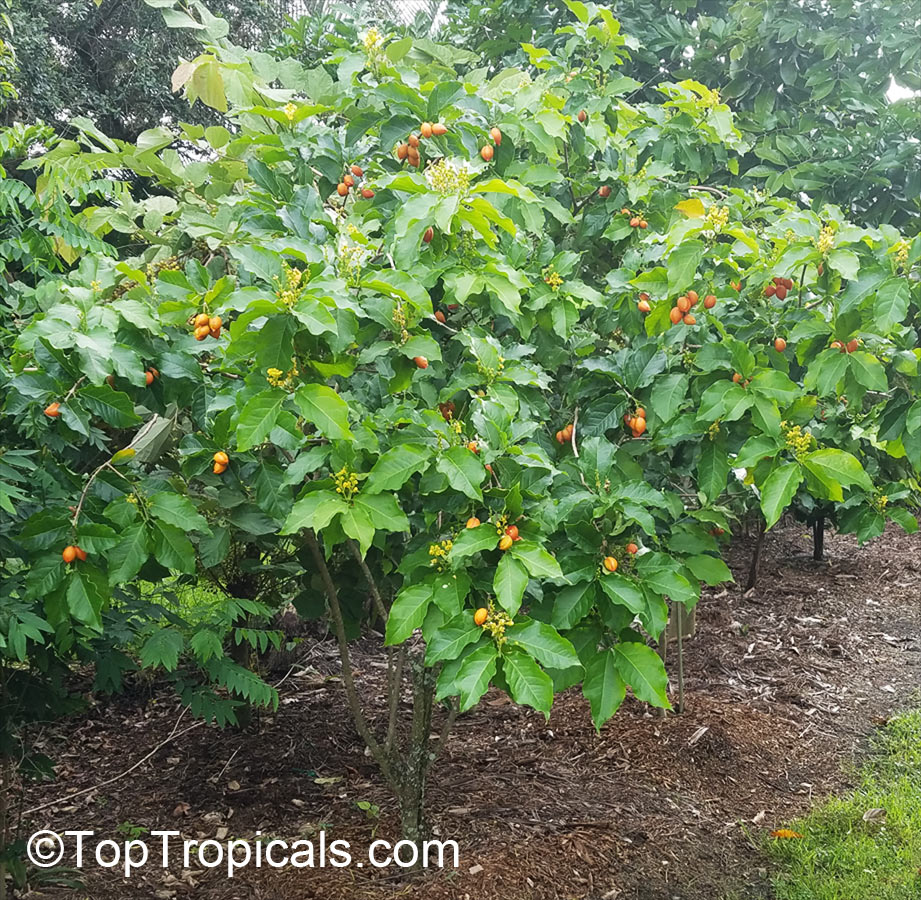
RECOMMENDED FERTILIZER:
SUNSHINE C-Cibus - Crop Nutrition Booster
Mango-Food - Smart Release Fruit Tree Booster
SUNSHINE-Honey - sugar booster
